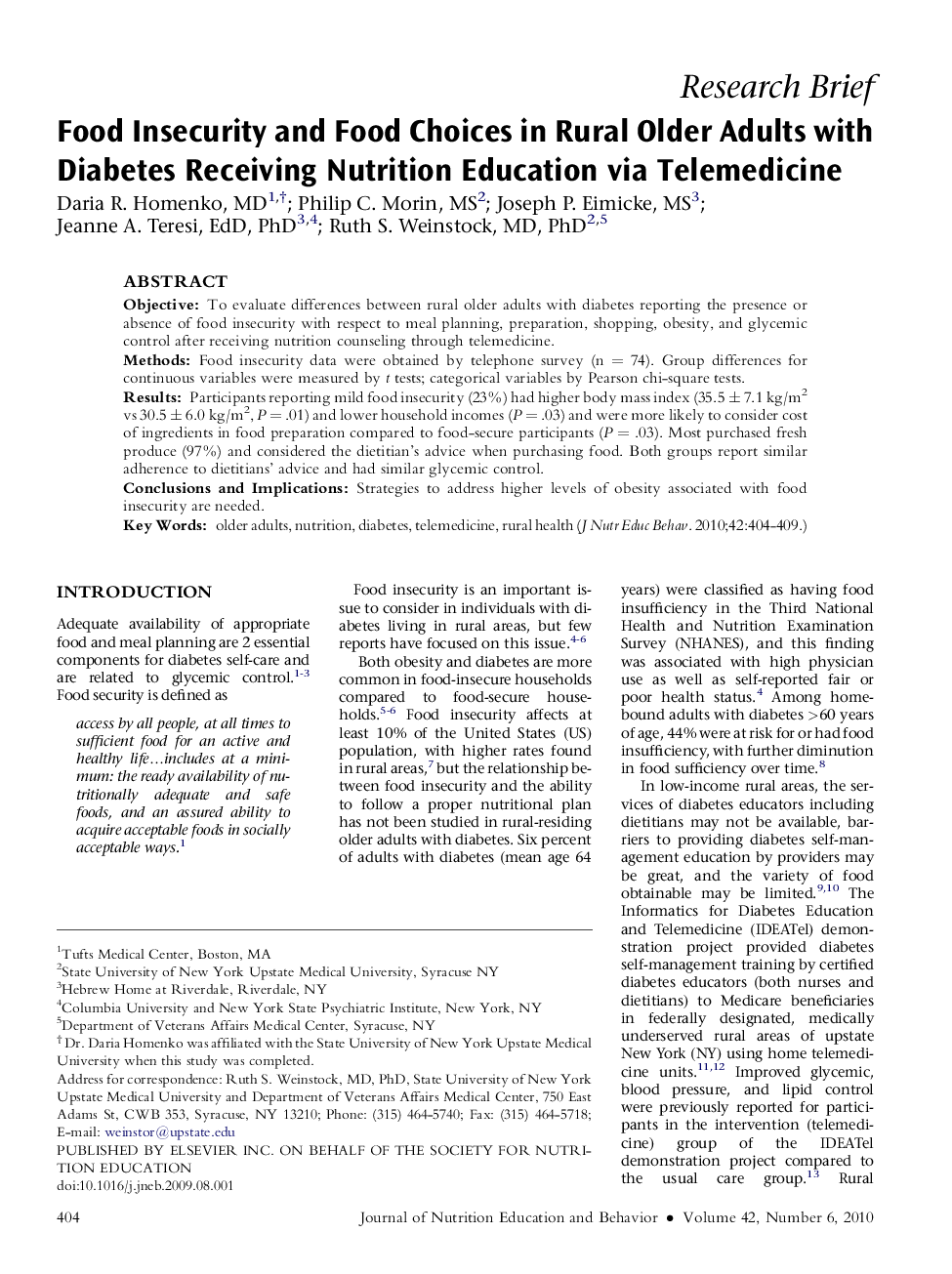| Article ID | Journal | Published Year | Pages | File Type |
|---|---|---|---|---|
| 361976 | Journal of Nutrition Education and Behavior | 2010 | 6 Pages |
ObjectiveTo evaluate differences between rural older adults with diabetes reporting the presence or absence of food insecurity with respect to meal planning, preparation, shopping, obesity, and glycemic control after receiving nutrition counseling through telemedicine.MethodsFood insecurity data were obtained by telephone survey (n = 74). Group differences for continuous variables were measured by t tests; categorical variables by Pearson chi-square tests.ResultsParticipants reporting mild food insecurity (23%) had higher body mass index (35.5 ± 7.1 kg/m2 vs 30.5 ± 6.0 kg/m2, P = .01) and lower household incomes (P = .03) and were more likely to consider cost of ingredients in food preparation compared to food-secure participants (P = .03). Most purchased fresh produce (97%) and considered the dietitian's advice when purchasing food. Both groups report similar adherence to dietitians' advice and had similar glycemic control.Conclusions and ImplicationsStrategies to address higher levels of obesity associated with food insecurity are needed.
